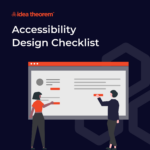In software and application development, there is often some confusion regarding usability testing vs. user testing. Unfortunately, even experienced product owners, VPs of Technology and CIOs, and developers often confuse these two concepts.
So, in this article, we’ll break down the difference between user testing and usability testing – and explain why each is important.
User Testing Is Need-Based: Does The User Need To Use My App?
As a concept, user testing is not related to user experience (UX). Although, of course, a great user experience should always be the goal. Still, user testing aims to test the usefulness of your app concept and whether anyone will actually use it.
Let’s say you wanted to create an app built to promote bicycle safety by using GPS, gyroscopes, and motion sensors on a smartphone to detect crashes or potential emergencies and send a message to an emergency contact if a sudden stop or collision is detected.
It would involve researching with potential app users, such as commuting cyclists or cycling enthusiasts, through focus groups, interviewing bicyclists to see if they would use this app, doing field studies to assess its effectiveness, and researching other apps be competitive in your space.
This process of user testing allows you to see if there is a large user base for your app – and if it solves a real-world problem, which is essential for the success of any software application.
Usability Testing Is ExperienceBased: Are Users Able To Use My App Effectively?
Based on the findings from user testing – you initiate the design process to build the UI of the App. Once a prototype is created, it’s time for usability testing. This is when you’ll start iterating upon your current app design to ensure that it’s intuitive, convenient, and easy to use for those who install it.
Let’s use our above example of a cycling safety app again. After your team has established a need and demand for this product, you’ll move into usability testing.
You will observe people using your app and ask yourself questions like:
- Is it easy to understand how to use the app?
- Should it stop and start automatically or run in the background?
- Are there additional features you could add? Would they add to the experience – or detract from it?
- Can you streamline the design or interface?
- Is it pleasant to interact with your app?
- Is the app stable and usable across every intended device or range of devices?
By iterating upon your design and getting feedback from real-life users, you’ll be able to answer these questions – and many more.
User Testing And Usability Testing Help Make Your App The Best It Can Be!
A successful app can’t just be streamlined, beautiful, and easy to use. It must also solve a need. Take Uber, for example. It is easy to use and convenient, but it also helps solve a slow, inconsistent taxi service that has plagued us for decades.
That’s why understanding the difference between the user and usability testing is so important. By building useful and beautiful apps through user testing and usability testing, you’ll be able to ensure that you lay the foundation for a successful app or piece of software.
—
What’s Next
Idea Theorem is an award-winning design & development agency based in North America. Through our empathy-driven approach, we have crafted digital products that have positively impacted over 10 million users. Our mission is to shape the digital future by delivering exceptional experiences. Contact Us if you have any questions; we will gladly help you.







